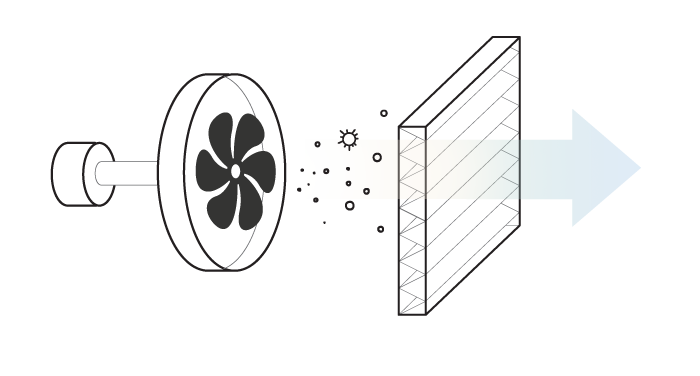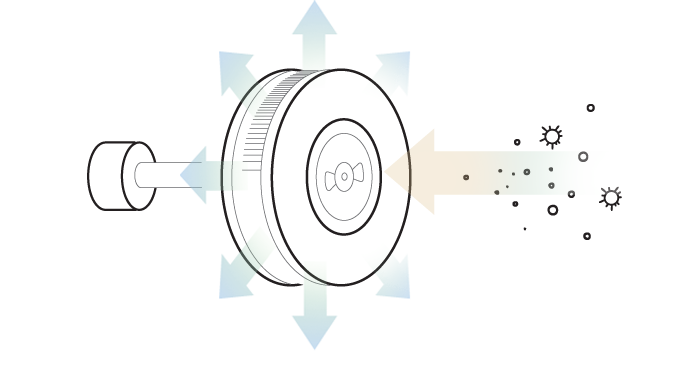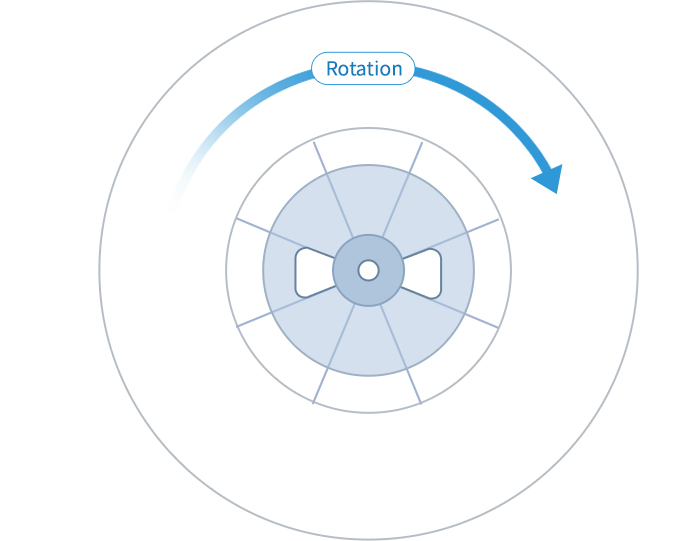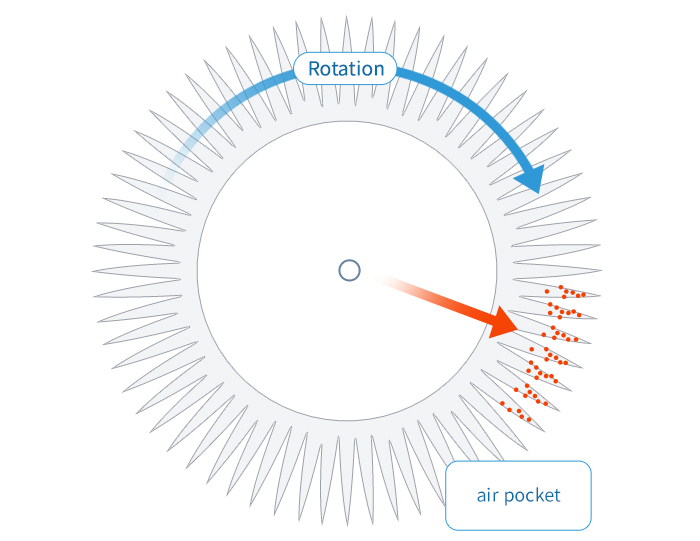HEPAfan TECHNOLOGY
Comparison of air-purifying structures

Existing air purifiers
- Existing air purifiers filter foreign substances in the air by rotating the fan at high speed and pushing the polluted air through the HEPA filter.
- Since the HEPA filter has very small, dense holes where air passes through, the fan must be rotated very quickly to let the polluted air pass, but this generates noise. Therefore, a complex structural design is required to reduce the noise.
- If polluted air pushed into the HEPA filter from the fan leaks in the middle, the amount of air passing through the HEPA filter is rapidly reduced, making it difficult for the filter to function properly. This requires a complex structure that ensures airtightness to prevent air from leaking throughout the product, which hikes up costs and the product's price.

HEPAfan HEPAfan
- HEPAfan does not need a separate fan since it has a simple structure of only rotating the HEPA filter
- When the filter rotates, strong air pressure is generated at the edge of the HEPA filter by the principle of centrifugal force. The internal air is then discharged to the side through the HEPA filter, which filters pollutants.
- When air is discharged to the side, the center simultaneously enters a low-pressure state , and external polluted air is sucked into the center. As this continues, the external polluted air is purified through a filter inside the HEPAfan.
Operating principles of the HEPAfan air pocket
- If only the part toward the center of rotation is open and a closed pocket is rotated, a strong pneumatic air pocket is formed inside the pocket by centrifugal force.
HEPAfan, which uses strong centrifugal force and air pocket
- Since HEPAfan's folded HEPA filter acts as an air pocket and more than 160 air pockets are formed, HEPAfan can effeciently filter polluted air.

